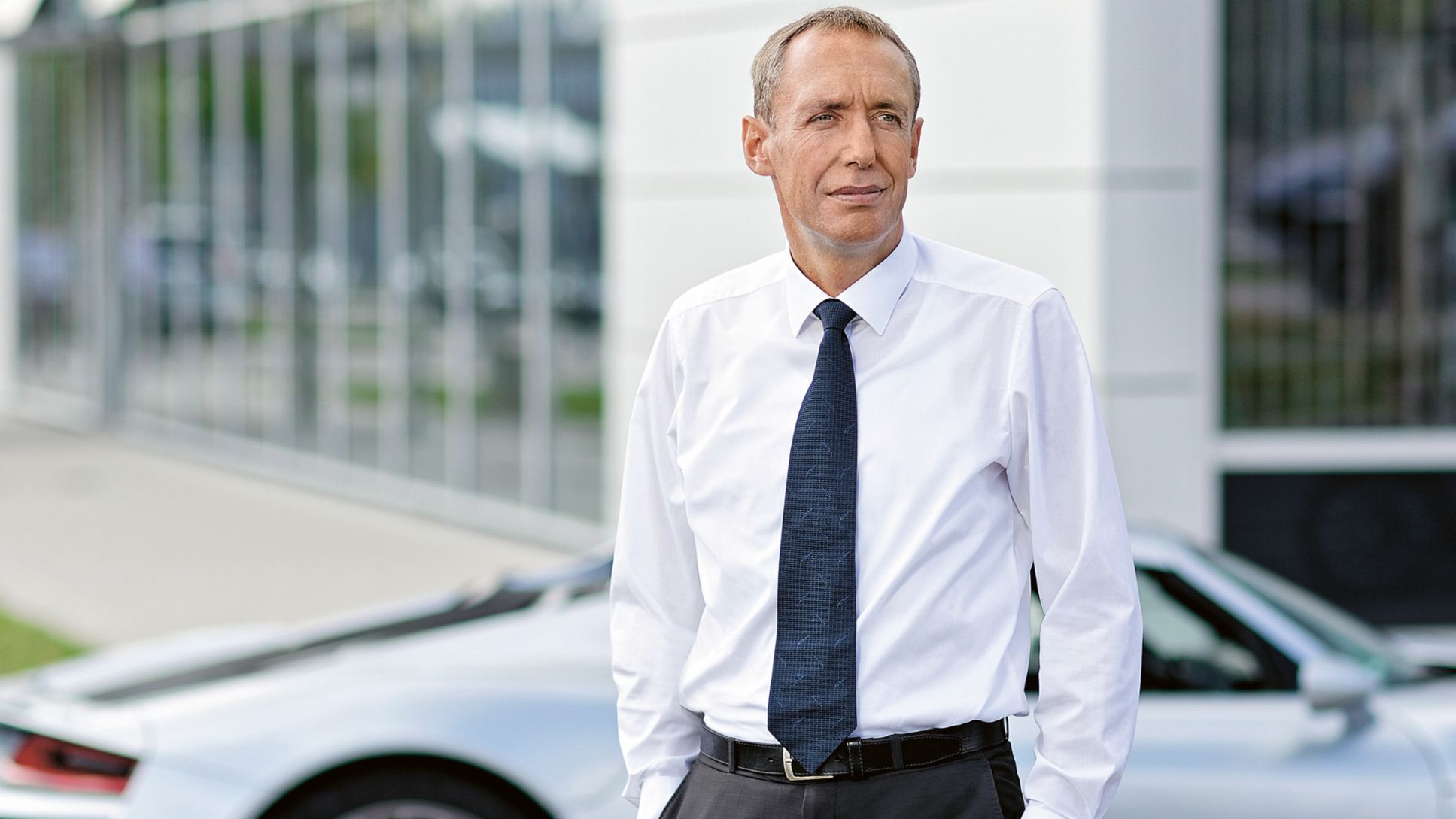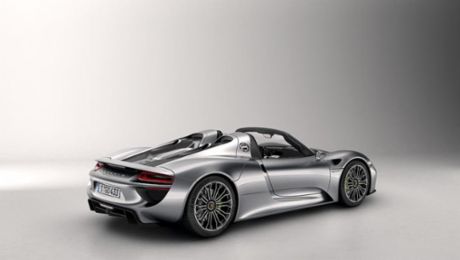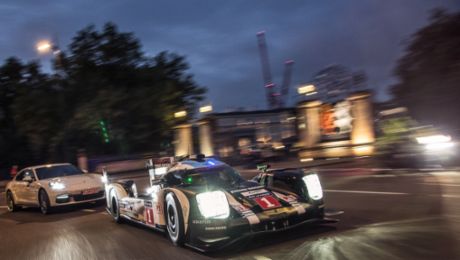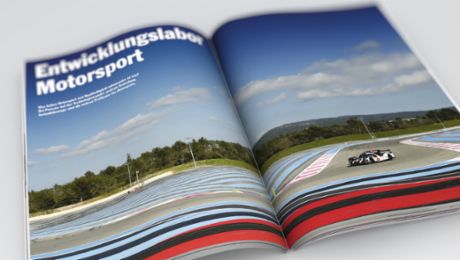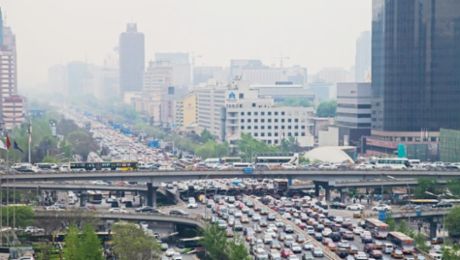Mr. Lappe, what do you think the car of the future will look like?
Dirk Lappe: Many people immediately think of autonomous driving when they think of the car of the future. So I would like to begin by pointing out that the car of the future will always be strongly influenced by environmental concerns and the imperative to reduce CO2 emissions, and will require massive investments and substantial efforts on the part of us engineers. Future vehicles will have energy consumption values that would have been unimaginable just a few years ago and comprise smart concepts that utilize renewable energies in appropriate ways for individual mobility. It is also important to bear in mind that mobility cannot be separated from deliberations on the environment and energy in general, but must be an integral part of the overall global strategy for decarbonization. From this point of view, autonomous driving is, to my mind, more of an application in the context of smart mobility concepts that contributes to CO2 reduction, but not an end in itself.
What environmental and energy issues will have the greatest impact on the car of the future?
By 2020, greenhouse gas emissions are to be reduced by 40 percent compared to 1990 figures and plans are in place to scrap nuclear power as a bridging technology by 2022. And by 2050, at least 80% of gross energy consumption is to be covered by renewable energy sources. Targets are also in place for a 50% reduction in primary energy consumption and a 25% reduction in electricity consumption compared to 2008 figures. By 2050, energy consumption for traffic is set to be reduced by 40% over 2005 figures. The EU has also taken up the issue of exhaust emissions and defined targets that will go into effect in 2020 according to which the entire EU new vehicle fleet of a manufacturer can emit only 95 grams of CO2 per kilometer according to the specifications of the European consumption cycle NEDC.
How will we get there?
To achieve these objectives, it is necessary to exploit the potential for greater efficiency in the industrial sector and expand the power grid in a manner that is as efficient and environmentally sound as possible. Digitization is likewise not an end in itself, but should rather primarily be a means of directing traffic and energy flows in an intelligent way. In short, it will require major investments and effort on the part of many actors involved in the process. It’s not enough for us simply to build electric vehicles; the overriding framework has to be in place for those cars to actually be bought by consumers. The new mobility services being announced in Silicon Valley that will allegedly flow from the advent of autonomous vehicles, or potentially changing business models due to new players emerging as competition to the conventional automotive industry, are, for now, either of secondary importance, or indeed counter-productive, in resolving the CO2 problem.
Do you believe that electric vehicles will be successful?
Of course! Electric drive systems offer, first of all, the possibility of CO2-neutral and zero-emission mobility. Another bit of good news: electric motors also offer an outstanding driving experience. Being CO2-neutral and fun to drive are not mutually exclusive. An electric vehicle is a highly emotional product. Due to the characteristics of electric motors, they develop very high torque from the outset, which is reflected in extremely dynamic acceleration from a standstill. Electric vehicles are also highly efficient and exceptionally maintenance-friendly. An electric drive unit requires only a small construction space and enables new, attractive interior concepts.
What do you see as the biggest hurdles for electric vehicles?
The biggest challenge, now as in the past, is storing the electric energy in the vehicle. The battery system in an electric vehicle is heavy and expensive and still far inferior to conventional vehicles in terms of the available amount of energy that can be transported. In small electric vehicles, the battery accounts for more than half of the sale price. As battery systems increase in size, another problem comes into play: the subject of charging times. With a battery size of 80 kilowatt hours and a typical charging capacity of 30 kilowatts, a full fill-up at the charging station takes two-and-a-half hours. Of course the situation will arise that you didn’t charge the car overnight at home and now have to take a lengthy unplanned drive. And the idea that the “tank” is constantly empty without having the capability of re-charging quickly is tough to swallow for the consumer. One solution to the problem is raising the charging capacity to 300 kilowatts. This reduces the charging time to just over 10 minutes. To achieve such high charging capacities, we need to find new ways of moving forward, such as raising the charging voltage from 400 to 800 volts.
How will the problem of energy storage be resolved in the future?
The storage capacity of lithium-ion batteries today is around 100 watt hours per kilogram. In the Boxster E research vehicle with a consumption of roughly 140 watt hours per kilometer, ideally this is enough for a range of 270 kilometers, but the high battery weight of some 360 kilograms also contributes to a significantly higher overall weight as compared to a gasoline-powered model. The limit for lithium-ion cells is currently estimated at roughly 200 to 250 watt hours per kilogram; the ranges possible within those limits are expected to double in the next five years. The general assumption is that between 2020 and 2030 we can expect a technological leap to more than 500 watt hours per kilogram, for example in the direction of lithiumsulfur. This technology could revolutionize electric vehicles in terms of range and weight. For lithium-air batteries, between 400 and 2,200 watt hours per kilogram are being talked about, though I don’t believe that this technology will be used in the foreseeable future.
Are fuel cells still an alternative?
The subject of a “hydrogen transformation” is indeed back in the press. While the technology is already mature enough for market launch, the associated costs are still too high. The high platinum content in the catalysts and the expensive insulating material for the hydrogen tanks ensure that the material costs will remain significantly above those for batteries for a long time. Although many components would actually be ready for series production from a design standpoint, there is a lack of suppliers that would have the capability to produce high unit numbers. Moreover, to date there is no established network of fueling stations and it looks likely to stay that way in the near future. Thus, in my view, a sensible battery or plug-in hybrid concept will continue to be far superior to a fuel cell concept both in terms of application and the cost-benefit ratio for a long time to come, while achieving similar sustainability performance through the use of liquid or gaseous fuels from renewable sources.
What will these cars’ interiors be like?
The interior of the car of the future will look different. The interior will be designed to enable both autonomous and non-autonomous driving. The operating concept will change radically. Even steering wheels will look different than they do today and will fulfill additional functions. New types of user interfaces are just around the corner. We’re prepared for this and are massively expanding our software capabilities.
What role does Porsche Engineering play in all of these developments?
Porsche Engineering is committed to playing an active role in shaping the world of tomorrow – particularly with regard to mobility questions, of course. Entire vehicles, or individual components and modules, are continuously optimized to meet the demands of the future. Beyond innovation and efficiency, environmental issues and sustainability are focal points in these developments. As an integral part of Porsche development, we are active in all areas of future vehicle development, including in the fields of electric drive systems and smart mobility. Porsche Engineering is the strategic partner for many customers in the design of complete electric drive systems, a field in which we can boast across-the-board expertise, from the idea on a blank sheet of paper to testing of the final product at the Nardò Technical Center.
What will the overall mobility scenario of the future look like?
By the year 2030, there will be massive changes and challenges in the field of mobility. Worldwide, more and more people are living in large cities. Particularly in less-developed countries, the living conditions in cities are more attractive for many. Currently some 100 million Chinese migrant workers are flowing into the cities from rural areas. In 2008, for the first time, more people lived in cities than in rural areas; meanwhile nine percent of the urban population worldwide lives in megacities. This situation of having such a large number of people living in tight quarters inevitably leads to new urban problems and challenges. The vehicle manufacturers have to adjust to that, and that is already happening in many areas.
The relatively short distances within megacities will, within the foreseeable future, increasingly be driven in electric-powered vehicles. So plug-in hybrids and electric vehicles will be an integral part of the urban scenery. In the field of two-wheeled vehicles, electromobility has long since begun its march to dominance in China. Existing roads for cars can be expanded to include additional lanes for motorcycle-like vehicles. While stationary, these single-track vehicles can be stabilized by a rotary drive that returns its energy while the vehicle is in motion.
To what extent will these vehicles be connected?
My hypothesis is that drivers in the year 2030 will no longer sit in traffic jams because intelligent traffic control systems will direct traffic flows in a way that ensures that traffic jams do not form in the first place. If a traffic jam did occur under exceptional circumstances, this will not bother the driver of the future overly because it will be possible to pursue normal activities in the car as if one were at home or in the office. So one vision for the future would be a large city in the year 2030 in which completely connected cars of all classes are directed on multiple levels. Local and long-distance traffic are perfectly integrated in an intermodal concept. People’s need for individual mobility would still exist, however, with one’s own personal vehicle representing a part of one’s individual lifestyle.
So mobile self-determination will not end with autonomous vehicles?
The desire for mobility is as old as humanity itself. In 30 years there will still be people who want to explore their surroundings or drive to the countryside with their families. We at Porsche Engineering want to play our part in making the future better and more sustainable. Everyone will be moving around significantly more efficiently than today. That applies both to the consumption and emissions of the vehicles, but also to a more pleasant travel experience thanks to the connectivity of the vehicles. There will continue to be areas in which autonomous driving makes little sense or the human simply does not want to have the “external control” element.
Ferry Porsche once said that the last car ever built will be a sports car. What that means to me in a more general sense is that even in future vehicles, driving pleasure and the appreciation of having one’s own, personal mobility will continue to be the focus. So we’re not satisfied with simply furthering the development of the here and now. Together with our customers, we are developing a sustainable, highly appealing future that I am very excited about—and in which I can still get behind the wheel and drive if I so desire.
About the person
Dirk Lappe (52) studied electrical engineering with a specialization in communications engineering at Braunschweig University of Technology. After his studies, he joined the research department at Robert Bosch GmbH in Hildesheim, Germany, and worked there from 1989 to 1996. There he worked on various projects in the field of image processing and transmission and was involved in the development of the MPEG-4 and UMTS standards. As the head of the European projects Mobile Audio Visual Terminal (MAVT) and Mobile Multimedia Systems (MoMuSys), between 1992 and 1996 he represented the European platform for MPEG-4 and the multimedia services of UMTS in the Mobile Project Line Assembly (MPLA) in Brussels. From 1996 to 1998, Dirk Lappe headed up UMTS development at Bosch Telecom GmbH. In 1998 he joined Harman Becker in Karlsbad, Germany, as General Manager for Strategic Programs and established the telematics development department. In 2002, Dirk Lappe joined Porsche Engineering and initially took over as director of the Electrics/Electronics department. He has been the Technical Director of the company since 2009. Dirk Lappe holds more than 70 invention disclosures and patents.
Info
Text first published in the Porsche Engineering Magazine, Issue 2/2015
Text: Frederic Damköhler // photography: Jörg Eberl
